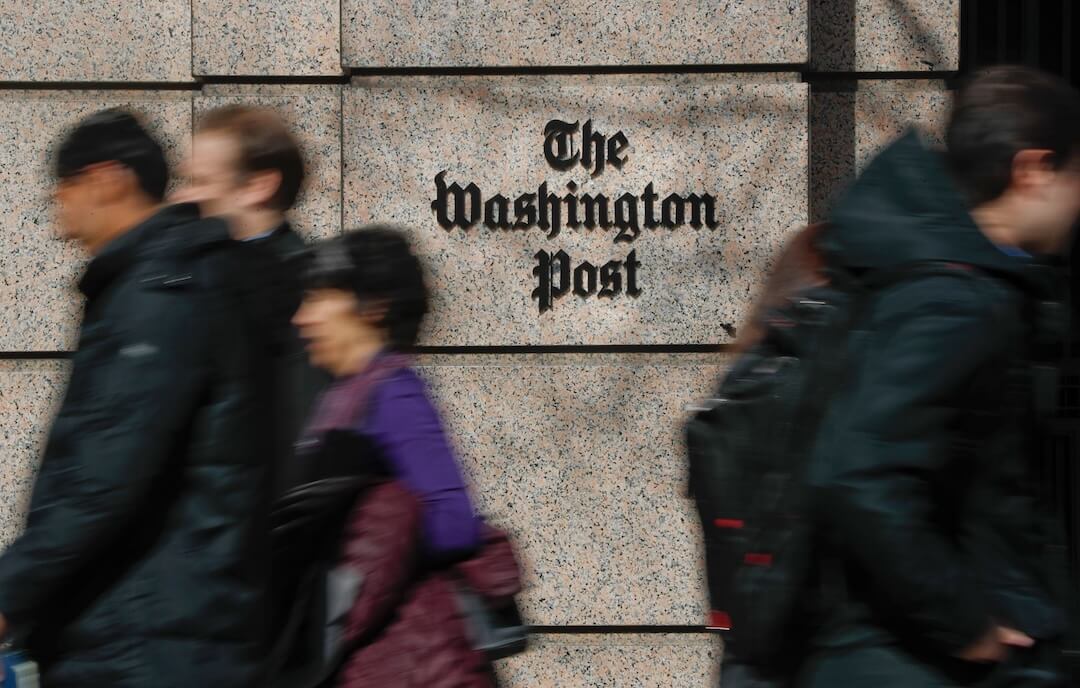The news cycle is moving on to President-elect Joe Biden’s transition and the last-ditch legal efforts from the Trump camp to reverse the apparent result of the election. But questions — important questions — linger from the drama of last week’s vote count and its uncertainty.
Here are three that jump out to me. All are likely to be the work of weeks and months to begin to resolve.
Why were the polls so wrong? Same as in 2016?
Plenty of mea culpas and resolutions to do better followed Donald Trump’s surprise win over Hillary Clinton in 2016. 2020 represents another big miss — about 3% in the national popular vote, nearly 10% in some states like Iowa and Wisconsin.
Once again, it was Trump’s performance that was underestimated — and by similar margins, though this time he will almost certainly lose rather than win the one tally that matters, the electoral college.
Nate Cohn, The New York Times election data specialist, took a shot at explaining why the polls misfired again in a detailed piece posted Tuesday afternoon.
In brief, Cohn advanced many possible explanations but said it will take time to crunch the data and see what mattered most.
Among the most obvious culprits:
- While it was simple to see the big swing to early and mail voting, forecasting the impact was much harder.
- That was doubly true because the pandemic may have nudged voters leaning Democrat more than others to get their ballot in before the in-person lines on Election Day.
- The consensus view was that 2016 polls undercounted non-college-educated white voters, a core group of Trump enthusiasts. In theory, that had been adjusted for in revised polling models, but that group may have proven even harder to reach by phone or online in 2020 … and more mistrustful of answering questions.
- Cohn does not think much of the “shy Trump voter” hypothesis — the idea that respondents mislead pollsters because they feel a preference for their candidate is socially unacceptable. I am not so sure that can be ruled out, having seen several statewide races over decades where Black candidates held a clear polling advantage but lost in the end.
- Turnout (see more below). A record turnout was anticipated. There were certain known facts about numbers of young people registered, their party affiliation or the affiliation of others voting for the first time. That is hardly the end of the story, however. How about a group that sat out 2016 but were more motivated to turn out this time? Or those who decided whether to vote or decided who to vote for at the last minute?
Sorting all this out carries heavy implications for 2024. If the polls are missing by so much in successive elections, can they be recalibrated next time around? Plus, can horse race reporting be recast to make less or better use of the noise and assumed precision of polling?
[the_ad id=”667826″]
Who are all those added 2020 voters?
I am not sure the raw numbers have been reported with the exclamation marks they deserve. With a very small portion of the vote still to be tallied, 16 million more voted for the two major-party candidates this year than in 2016 (145 million versus 129 million).
That’s a good thing, since Americans have received all sorts of chiding through the years for not taking advantage of their right to participate.
But surely weighing the composition of this year’s additional voting cohort has lots to do with figuring out what the election means.
For starters, minor party candidates such as Libertarian Gary Johnson and the Green Party’s Jill Stein got 6 million votes between them in 2016.
Libertarian Jo Jorgensen drew just 1.75 million in 2020 (although a Wall Street Journal column argued that her vote was bigger than Biden’s margin in the five close battleground states).
The total vote to date, with some opting only for down-ballot races and skipping the presidential contest, is 148 million.
Voters age 21 or younger could not have been registered four years ago. An added number of slightly older young voters have come aboard. Another set of voters, most of them older, died over the last four years.
That still will leave millions of added voters, who were lured this time by the greater ease of voting, well-targeted messages from the candidates, get-out-the-vote efforts or other factors.
The huge turnout also runs counter to the received wisdom that very negative campaigning suppresses turnout.
Once the forecasting season for 2024 comes around, should the media (and the candidates themselves) assume turnout will slide back? The pandemic accelerated a trend to early voting; if assembling is no longer considered a health risk, will momentum to vote early continue nonetheless?
If the denominator for voting cannot be estimated with anything close to precision in advance, pre-election polling and the wall-to-wall running reports as votes are being counted likely get less reliable cycle by cycle.
[the_ad id=”667872″]
Calling winners
I wrote in advance of the Nov. 2 vote and again last week in the specific case of Arizona about a split among major news organizations in how to decide when and how to call the winner in a given state.
No need to rehash all that, but I would note that as of Tuesday afternoon, The Associated Press, its collaborators at Fox News and a host of AP clients are counting Arizona as a Biden win — as they have since Tuesday night.
CNN and other networks who participate in a vote estimating consortium recognize Arizona as highly probable for Biden but do not consider the outcome a certainty.
I am seeing an element of paradox in the split verdict. Both the AP and Fox promised to be transparent about how they arrived at their calls, and they have been. For AP, that meant many advance interviews with executive editor Sally Buzbee and a series of explainers since.
Fox decision desk chief Arnon Mishkin was available before the election as well, and has appeared a number of times on air over the last week.
The hitch is that being transparent about methodology veers quickly into math few readers and voters, save those in professions involving statistical analysis, will understand. Mishkin was talking T-factor standard deviations last Tuesday with host Bret Baier. That was the heart of his team being certain of their hypothesis that Trump could not make up his first night deficit. But … huh?
As the Arizona vote counting continues at a trickle, Biden’s margin has declined from 68,000 Wednesday to 14,000 after a new batch from the Phoenix area Monday night. An estimated 60,000, including some disputed provision ballots, have yet to be tallied.
So you’re telling me Trump still has a chance? Mishkin says no — not if you can calculate the location and other parameters of the votes still to be counted.
[the_ad id=”667878″]
I fear that with the interlocking complexity of polling, turnout and calling winners, voters — perhaps passionate partisans eager for a definitive answer — want to know what time it is, not how a watch is made.
That, in turn, spills into issues of media credibility on election week and any other week.







